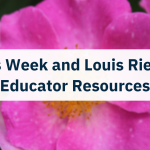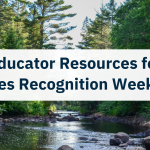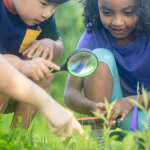Pink Shirt Day: Sustaining Its Message Through Restorative Justice
The Importance of Pink Shirt Day
Pink Shirt Day began in 2007 when two teenagers, David Shepherd and Travis Price, organized a protest at their high school in Cambridge, Nova Scotia, to support a younger student bullied for wearing a pink T-shirt. Their act of kindness inspired a nationwide movement. Now, on the last Wednesday of February, students and teachers across Canada wear pink shirts to take a stand against bullying.
While Pink Shirt Day is a powerful symbol of solidarity, it’s crucial to advocate for its anti-bullying message every day. According to Statistics Canada, 7 in 10 youth experience some form of bullying, with 42% facing it monthly or more often.
How can we as educators help change these statistics and foster safe, inclusive environments for students? One way is by using restorative justice principles to promote empathy and accountability when resolving classroom conflict.
Keep reading to discover how restorative justice can help create a safe and inclusive learning environment.
Restorative Justice and Creating Safe and Inclusive Spaces
Restorative justice is a form of conflict resolution with roots in Indigenous traditions and communities. It focuses on healing for the victim and rehabilitation (rather than punishment) for the offender. This approach holds offenders accountable by helping them understand the harm they caused and by working to repair relationships with the victim and others affected. Restorative justice fosters safe, inclusive environments through community support and a non-hierarchical approach to conflict resolution by prioritizing healing and reintegration.
Community-Based Early Intervention and Empathy-Focused Exercises
Lisa Dixon-Wells, founder of Canada’s Dare to Care program, highlights the importance of equipping students with the right tools to recognize bullying and intervene before it escalates. Educators can foster a safe, inclusive environment through empathy-focused exercises that help students differentiate between typical conflict and bullying, build empathy, and develop skills to de-escalate situations.
Here are some exercises you can try:
- Conflict Resolution Role-Playing: Divide students into groups and assign each group a conflict-based scenario. Guide students in acting out their conflicts and resolving situations empathetically. Afterward, bring students together to share and discuss their approaches. You can use this time to give further suggestions or emphasize other ways to resolve the conflict. Role-playing scenarios can help students recognize and respond to future conflicts while exposing them to different perspectives and fostering empathy.
- Check-in Activities: Have students complete regular check-in activities to help develop emotional intelligence and provide a safe space for sharing emotions. Encourage participation at their comfort level. These activities can help you gauge your students’ mental well-being by identifying patterns that might signal more significant concerns. These activities also let students know your classroom is a safe space to feel and process challenging emotions.
- Peer Mediation and Conflict Resolution Skills: Teach students active listening, mediation, and mentoring skills. These skills empower students to support their peers, develop emotional intelligence, and create a more inclusive environment.
Restorative Conflict Resolution
When bullying escalates, restorative conflict resolution can be the next step. Restorative justice circles bring the community together to address the harm caused, focusing on the victim’s needs and accountability for the offender.
Restorative justice circles typically include the family members of the victim and offender, along with supportive community members, such as counsellors, social workers, or Elders. The circle provides a safe space for the victim to share their experience and for the offender to reflect on their actions and take steps to repair the harm.
Done effectively, restorative justice circles can reduce bullying and foster a safer, more inclusive environment by:
- Establishing Community Norms: Everyone involved in the circle, including students, parents, teachers, community members, and social workers, must collaborate and agree on what is acceptable moving forward.
- Building Empathy: One of the ultimate goals is for the offender to understand the harm they have caused and empathize with the people they have harmed, reducing the likelihood of repeat offences.
- Promoting Reconciliation: The process allows healing to begin and relationships to rebuild.
This approach emphasizes accountability, empathy, and community collaboration to create change that lasts.
Reconciliation and Healing
Reconciliation is a key aspect of restorative justice. Sometimes, we feel it’s okay to move on after the offender has been “justly punished” for their offence. As discussed, however, an essential part of restorative justice is for the offender to recognize the harm they have done, genuinely apologize, and make amends for their actions.
If the offender is open to reconciliation and taking accountability, here are some activities you can try:
- Community or Collaborative Projects: Encourage participation in projects that help the offender build stronger connections and which benefit the community, such as neighbourhood cleanups or volunteering for a community event.
- Behaviour Contracts or Action Plans: Help the offender create a plan to give back, such as writing an apology letter or completing specific restorative actions.
It’s also essential to repair your relationship with the offender. Avoid holding biases that label them as perpetually harmful because this can hinder their reintegration into the community. Building trust and openness supports healing for everyone involved.
Sustaining the Message of Pink Shirt Day
Pink Shirt Day delivers an important message that we must sustain throughout the year. Awareness is a great start, but action must follow. Restorative justice practices allow us to build safe and inclusive environments where students can focus on growing and learning.
Please take some time to read the resources below to take the first step in implementing restorative justice in your classroom and community.
Resources
Restorative Justice in Education by the Canadian Restorative Justice Consortium
Restorative Justice: Resources for Schools by Edutopia
Restorative Justice School Resources by Centre for Restorative Justice








